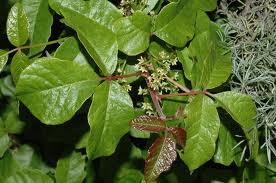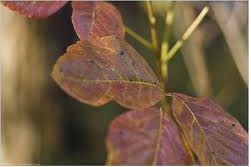The general rule for poison oak or poison ivy is,
"Leaves of three, let it be"
  
YosemiteBlog.com says,
"Poison Oak contains an irritating, oily sap called urushiol. Urushiol triggers an allergic reaction when it comes into contact with skin, resulting in an itchy rash, which can appear within hours of exposure or up to several days later. A person can be exposed to urushiol directly or by touching objects Ð clothing, gear or pet fur that has come in contact with the plant.
Most rashes caused by poison ivy, poison oak, or poison sumac are mild and last from five to 12 days. In severe cases, the rash can last for 30 days or longer.
WebMD: The rash that results from the poison plants is a form of allergic contact dermatitis. (Dermatitis is swelling and irritation of the skin.) Skin is not automatically sensitive to urushiol. Sensitivity builds up after the skin is exposed to the substance. When initially exposed to urushiol, the skin alerts the immune system of the presence of the irritating chemical. (Usually, no visible reaction will occur the first time a person comes in contact with a poison plant.) The immune system then prepares a defensive reaction for the next time the skin encounters the substance. This sensitizes the skin so that new contact with urushiol causes an allergic reaction.
What Should You Do If You Think You Have Been Exposed to Poison Oak?
- Start by removing your clothes and bagging them. Once you are home use rubber gloves to remove them from the plastic bag and wash them.
- Wash all exposed areas with cool running water. Use soap and water. Be sure to clean under your fingernails and between your fingers. In the woods, the water of a running stream can be an effective cleanser.
- Wash your camping gear and anything else that may have come in contact with the plants.
- Bathe pets exposed to the plants.
Links:
Leaves of Three Let it Be | YosemiteBlog.com
U.S. Army Center for Health Promotion and Preventive Medicine
Return to health
last updated 11 June 2012
|
